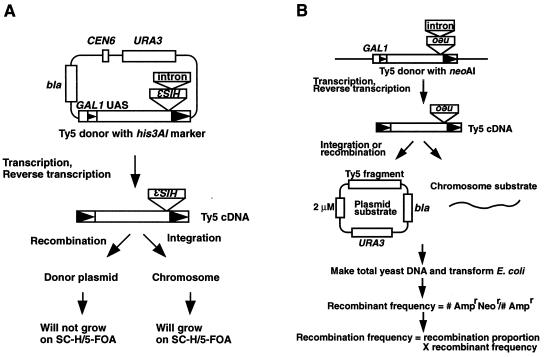FIG. 1.
Recombination assays used in this study (originally described in reference 20). (A) Transcription of a plasmid-borne GAL1-Ty5-his3AI element is induced by growing cells in galactose medium. After transcription and reverse transcription, the Ty5 cDNA with its functional HIS3 gene either integrates into chromosomes or recombines with plasmid substrates. This generates His+ colonies. Integration and recombination events are distinguished by whether the His+ cells can grow on SC-H–5-FOA plates. (B) Transcription and reverse transcription of a chromosomal GAL1-Ty5-neoAI element gives rise to Ty5 cDNA carrying the neo gene. This cDNA can either integrate or recombine with chromosomal or plasmid targets. Plasmid recombinants containing both the neo and bla genes will confer an Ampr Neor phenotype when introduced into bacteria; all plasmids will confer an Ampr phenotype. Recombination frequencies are calculated as the product of the recombinant frequency and the proportion of recombinants due to recombination. The arrowheads inside the elements represent LTRs.

